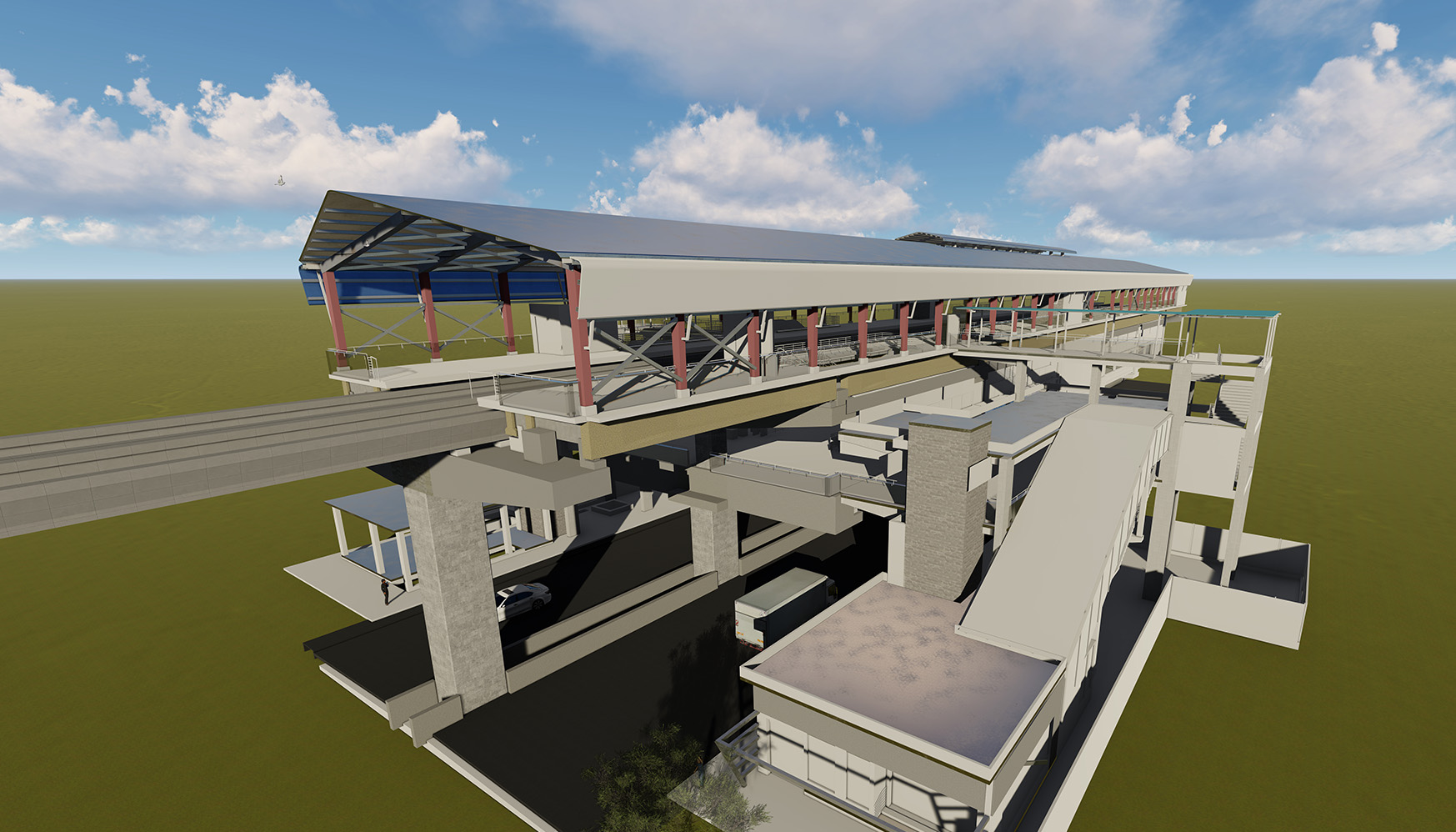
The challenge
One of the key design challenges on this project is that the alignment passes through thickly populated areas in Chennai city, with limited available Right of Way (ROW) and minimal land available. Around 3km of the 23.3km viaduct must be integrated with a proposed highway grade separator, pushing the metro structure to a second level around 24m above ground level. The push for elevated track and stations over the costlier option of tunnelling has created complex design challenges, particularly where the station design will need to support highway flyover at the first level and the metro train viaduct and station at the second level.
The metro system is designed to operate at a maximum travelling speed of 80km/hour. The viaduct includes many sharp curves of up to 125m and very complex long span bridges spanning up to 97m, which will be constructed using the cast in situ balanced cantilever construction method.
Digital and design innovation
“The entire Chennai Metro project is being delivered to BIM L-300, which I personally feel has been a game changer and gives us an edge over many of our competitors,” says Tiju. “BIM saves time and money as it instantly identifies issues and opportunities for improvements in design and construction. The project has complex bridges, for example, and tunnels in constrained locations designed by our JV partners. Our use of BIM is invaluable when we are studying constructability and conducting safety and design reviews.
“In fact, our clients are so impressed with our level of BIM detailing, they are interested in partnering with us to present the project and our work in technical publications.”
Moving people, not vehicles
Metro rail has one of the lowest carbon emission rates among mass transport systems. The need to cut congestion on roads, reduce journey times and provide meaningful sustainable solutions has seen a focus on moving people, not vehicles. Access to mass public transport is key to improving city liveability throughout the Indian state of Tamil Nadu. Phase 2 of the Chennai Metro Rail Project means mobility is fast becoming a reality. “A multi-mode public transport system will unleash a new wave of development, benefitting the ever-expanding Chennai metropolis,” says Tiju. “We organised knowledge sharing sessions for all disciplines to ensure learnings and insights were captured. As a result, BIM delivery is being adopted on the Bangalore Metro, a project where we are also providing design leadership, based on our experience with the Chennai Metro.”
The use of precast segmental construction was presented as an innovative solution to facilitate minimal disturbance to local traffic movements. As the metro route passes through very congested areas in the heart of Chennai city, transporting precast elements by road is difficult. Our teams recommended that precast elements be transported from precast yard using Self-Propelled Modular Transporters (SPMTs) over the casted deck as much as possible, and then lifted and positioned using special launching gantries before post tensioning is applied.
The precast segments will reduce construction time for the elevated station elements as well as reduce air pollution, noise and debris.




